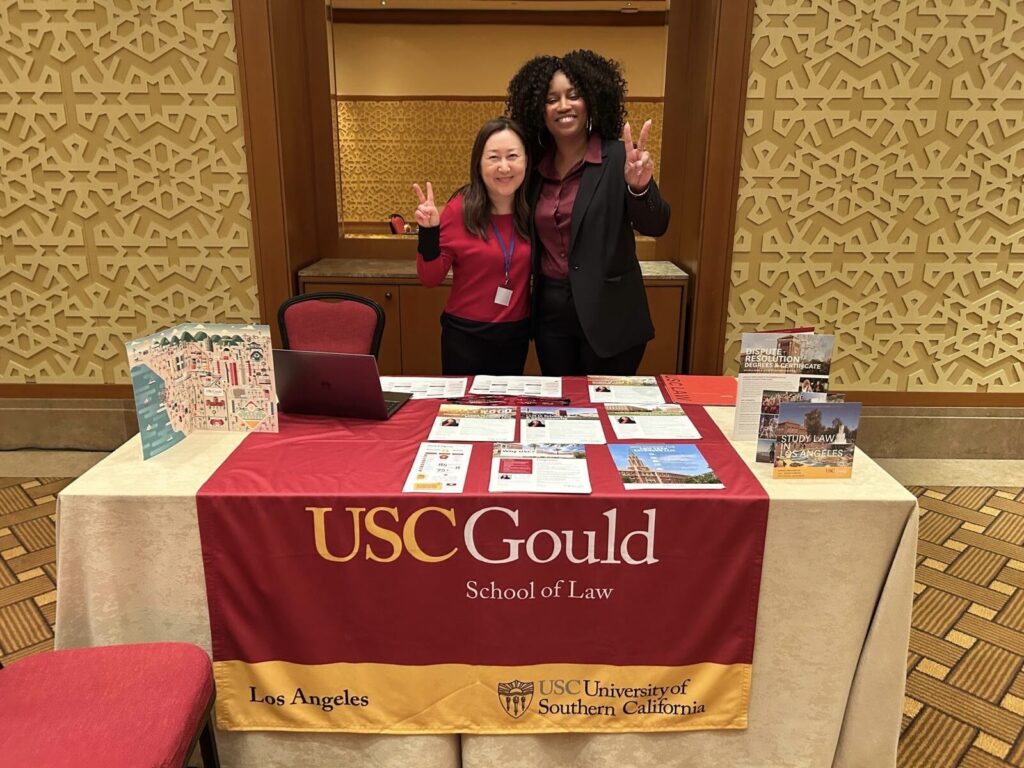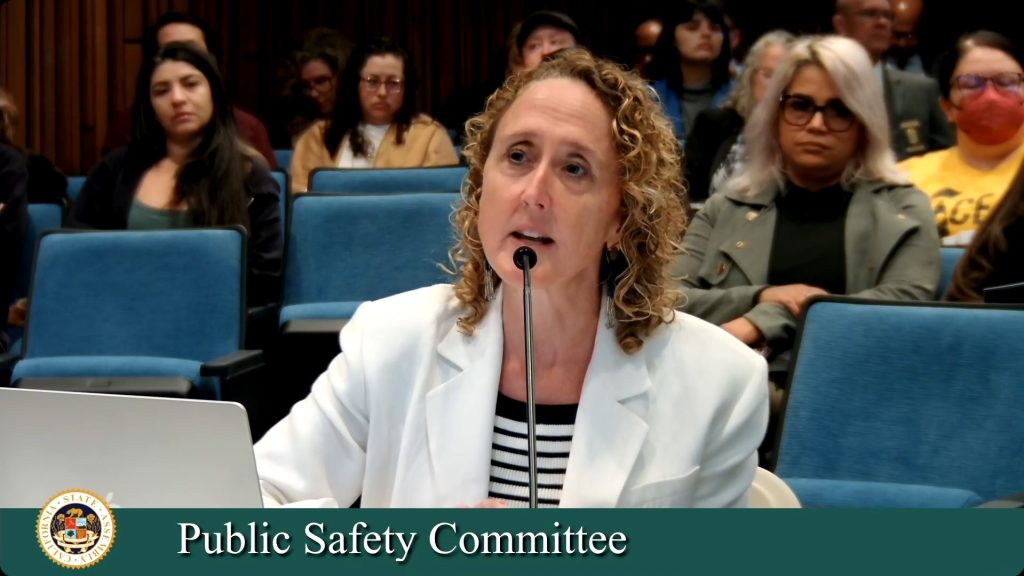California Court of Appeal hears real cases at law school
First-year USC Law students recently had the opportunity to see real cases being argued by real attorneys in their very own classroom.
 Division 8 of the California Court of Appeal, Second District held court in a lecture hall, hearing appellate arguments throughout the day, giving students a chance to attend court without stepping off campus.
Division 8 of the California Court of Appeal, Second District held court in a lecture hall, hearing appellate arguments throughout the day, giving students a chance to attend court without stepping off campus.
“Division 8 is honored to be here at USC Law School today. My father went to USC Law… I am wearing his robes today in honor of that and I am grateful to be here with all of you, future lawyers,” said Presiding Justice Tricia A. Bigelow before hearing the first case.
Justice Bigelow, along with Associate Justices Laurence D. Rubin, Elizabeth A. Grimes, and Madeleine I. Flier, paid special attention to the student audience, making the day a meaningful learning experience. When one case ended sooner than expected, the justices took questions and cited examples from the cases to illustrate their explanations.
The cases throughout the day covered a variety of topics found in the California courts of appeal. In one case, In re Richard Jimenez, the petitioner sought to appeal the California governor’s decision to deny parole in a second-degree murder case. Jimenez pleaded guilty in 1986 to second-degree murder of a rival gang member; in 2009 the Board of Parole Hearings voted to release him. Governor Schwartzenegger overturned that vote, finding there was “some evidence” that Jimenez still poses a risk to society.
 |
| CA Court of Appeals Div. 8 Justices Rubin, Bigelow and Flier |
“At this point in time the Governor found he couldn’t be sure Jimenez was taking full responsibility. His job is to protect society,” argued the attorney for the state. She argued that, as a matter of law, the court must defer to the governor’s decision as long as there was “some evidence” to support it.
During the arguments, the justices asked questions of both sides, challenging each attorney to further argue his or her case.
“There’s certainly an art to oral advocacy… but it’s not necessarily that different from every day communication,” Justice Rubin explained to students after one case was concluded. “It may only sway us four to five percent of the time, but it is an important part of the legal system and a privilege that lawyers should never waive.”
The Legal Writing Program provides information to students on how to obtain the final decisions of the cases they were able to observe; decisions are expected in a few months.

















